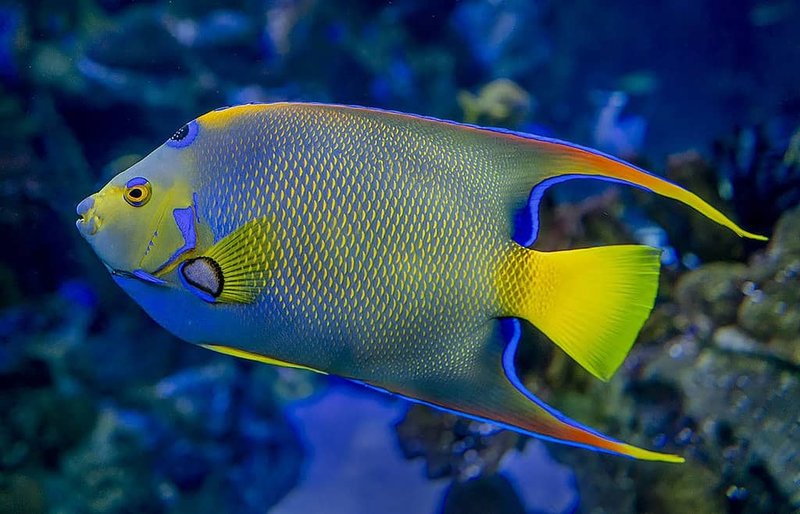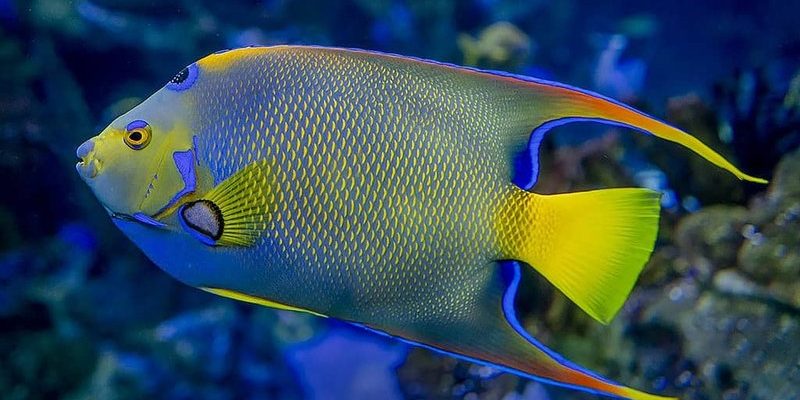
Angelfish belong to the Cichlidae family and are native to the waters of the Amazon River and its surrounding areas. They come in various shapes, sizes, and colors, each adding its own charm to any environment. Whether you’re a seasoned aquarist or a curious beginner, let’s dive into some astonishing facts about angelfish that might surprise you.
1. A Delightful Variety of Species
When we talk about angelfish, we’re not just referring to one type. In fact, there are several species within the angelfish family. The most commonly known is the *Pterophyllum scalare*, also known as the freshwater angelfish. These are typically found in shades of silver, gold, and black. However, there are also different breeds like the *Pterophyllum leopoldi* and *Pterophyllum altum*, which have their unique features and habitats.
The beauty of angelfish lies not just in their appearance but also in their behavior. Did you know that some species can grow up to six inches long and can live for over a decade in captivity? That’s a pretty neat commitment if you’re considering them as pets!
2. Unique Body Shape and Features
Angelfish are easily recognizable due to their distinctive shape. They have an oval body that tapers to a point, combined with long, elegant fins. Imagine a living kite, soaring through the water with grace! This unique body shape is not just for show; it helps them maneuver around plants and obstacles in their environment.
Their fins are a key aspect of their beauty. Some varieties have long, flowing fins that look like a dancer’s costume. Here’s the thing: these fins can also be a vulnerability. In crowded tanks or with aggressive tank mates, those beautiful fins can get nipped at, leading to stress and injuries.
3. Colorful Personalities
When you think of angelfish, you might just picture their stunning colors. But their personalities are equally fascinating! Individual fish can display unique behaviors, and they can develop bonds with their owners. Seriously! Many aquarists recount stories of their angelfish greeting them by swimming to the tank front when they come home.
Angelfish can also be territorial, especially during breeding seasons. This means you might see them putting on a bit of a display, which includes body flaring and puffing up their fins. It’s all part of their charm! Understanding their behavior is essential for a harmonious aquarium.
4. Care Needs and Requirements
Caring for angelfish can be a rewarding experience, but it’s important to know what they need to thrive. First off, angelfish prefer a tank that’s at least 20 gallons, with plenty of plants and hiding spots. They’re not the most demanding fish, but they do need clean water and a stable temperature between 76°F and 82°F.
Diet-wise, they enjoy a varied menu, including flakes, pellets, and occasional treats like bloodworms or brine shrimp. It’s essential to avoid overfeeding—this can lead to health issues. Make sure you adopt a routine; consistency is key in keeping your angelfish happy and healthy!
5. Breeding Behaviors
Breeding angelfish can be an exciting venture! They are known for their unique courtship rituals, which can be quite the spectacle. When ready to breed, a pair will often select a flat surface, like a rock or a leaf, to lay their eggs on.
Here’s the thing: angelfish are caring parents. They guard their eggs and fan them with their fins to keep them clean and oxygenated. However, not all fish will be kind to the young fry. Once hatched, it’s crucial to separate them from the adult fish to ensure their safety.
6. Social Dynamics in the Aquarium
Angelfish can be sociable, but they also have a reputation for being a bit temperamental. In a community tank, it’s essential to choose their tank mates wisely. Small or timid fish might not fare well with angelfish, as they can bully or eat them.
Ideal companions include other peaceful cichlids or larger fish that can hold their own. Just remember, keeping the peace in your aquarium often requires a little bit of observation and understanding of each fish’s personality.
7. Lifespan and Longevity
One of the most surprising facts about angelfish is their lifespan. In a well-maintained aquarium, they can live between 10 to 15 years—sometimes even longer! This longevity makes them a long-term commitment.
If you’re considering adopting angelfish, think about your long-term plans. Providing the right environment and diet significantly influences their lifespan. Keeping a close eye on their health and habits can help you catch any potential issues early.
8. Myth Busting: The Hybrid Debate
You might have heard some debates about hybrid angelfish and their legitimacy. Hybrid angelfish are often bred for specific colors or characteristics, resulting in beautiful variations. However, some fish enthusiasts argue that *pure species* are more desirable for genetic reasons.
Ultimately, it comes down to personal preference. If you appreciate the unique beauty of hybrids, there’s nothing wrong with that! Just like in any hobby, understanding the pros and cons will help you make an informed decision.
9. Eco-friendly Angels
Interestingly, many angelfish sold in pet stores today are bred in captivity! This has a positive impact on the environment. It reduces the pressure on wild populations and helps preserve natural habitats. Captive-bred angelfish tend to be hardier and better adapted to aquarium life, which is a win-win for both fish and aquarists.
By choosing to adopt these fish, you’re contributing to conservation efforts. Plus, watching angelfish thrive in your home can be incredibly satisfying.
10. The Art of Aquascaping with Angelfish
Finally, let’s talk about how you can use angelfish to enhance your aquarium’s aesthetics. Aquascaping is the art of arranging plants, rocks, and other elements in a tank. Angelfish thrive in a well-planned environment that mimics their natural habitat, which means creating a beautiful underwater landscape can positively impact their health.
Consider using a combination of tall plants and floating ones to create layers in your tank. Not only does this look great, but it also makes your fish feel secure. Imagine your angelfish flaunting their colors against a lush green backdrop—it’s a sight you won’t forget!
In conclusion, angelfish are more than just pretty faces in an aquarium. They offer an incredible array of fascinating facts that highlight their diversity, care requirements, and behaviors. Whether you’re captivated by their personalities, their stunning looks, or the challenges they present, these fish can be a joyful addition to your life. So, why not consider diving deeper into the world of angelfish? You might just find a new hobby that brightens your days!

